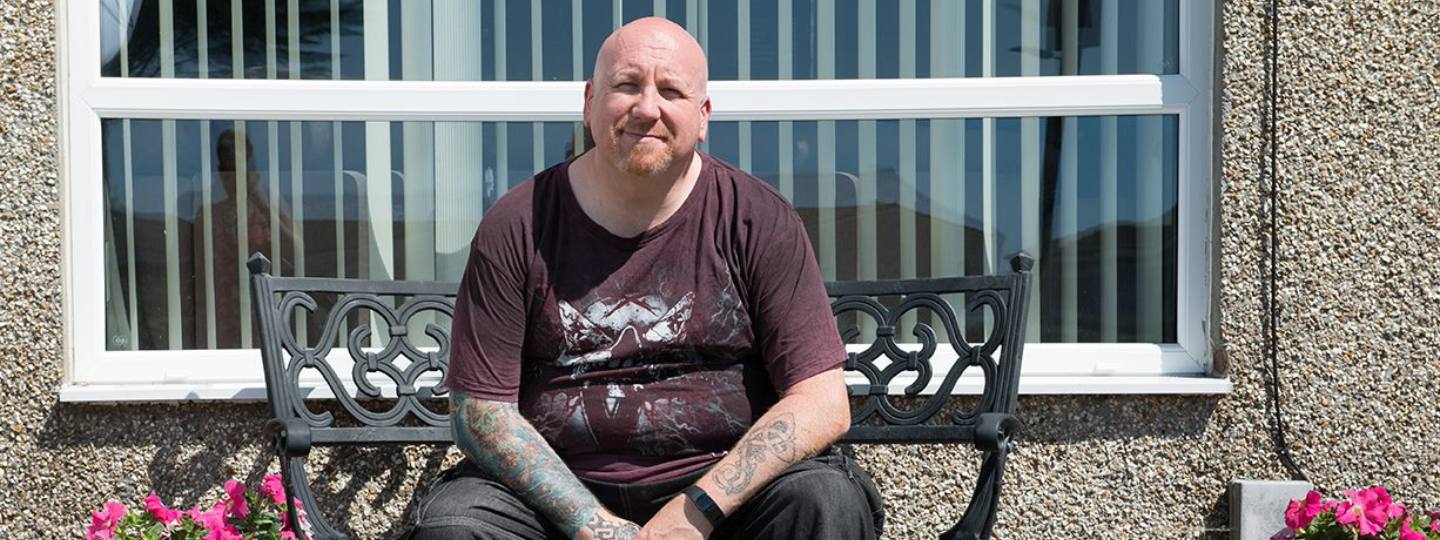“People seemed to think it was self-inflicted”: Neil on living with gout and osteoarthritis
29 December 2023
Neil, 55, was diagnosed with gout in 2002. While getting on the right medication and adjusting his diet helped his gout go into remission, he has since been diagnosed with osteoarthritis and sciatica.
Neil tells us more about his conditions and the impact they have on his daily life.
Neil’s gout diagnosis
 Gout is a type of inflammatory arthritis where the immune system, which is the body’s natural self defence system, attacks joints and surrounding tissues where urate crystals have formed.
Gout is a type of inflammatory arthritis where the immune system, which is the body’s natural self defence system, attacks joints and surrounding tissues where urate crystals have formed.
Urate crystals form in joints when the body’s urate (uric acid) level is persistently too high. These attacks lead to episodes of severe inflammation, stiffness, excruciating pain and damage (gout flares).
Neil’s gout symptoms have had a severe impact on his life.
“At its worst I couldn’t walk for three months, I couldn’t drive, I couldn’t even play with my daughter,” says Neil. “The only way that I could get around was by crawling on all fours.”
In the UK, an estimated 1.6 million people have a recorded diagnosis of gout, and around 66,000 people are newly diagnosed each year. Despite this, when Neil was diagnosed with gout, he felt that there wasn’t a very strong understanding of the condition.
“My doctor seemed to think it was very much self-inflicted,” says Neil. “I asked what I could take, and he said it was managed through diet and exercise.”
There is still a misconception that gout is only caused by overeating and drinking too much alcohol. And while it’s true that being overweight doubles your risk of gout, there are other potential causes too.
For example, inherited genetic factors, taking some blood pressure medicines, or conditions where the kidneys work less well to flush urate out of the bloodstream.
“All I wanted then was information, which I couldn’t get,” says Neil. “I ended up getting more from the UK Gout Society than the NHS.”
Treatment for gout
Neil struggled with his gout for twelve years before getting any treatment. But his life changed when he saw a rheumatologist and started taking allopurinol.
Allopurinol is a very effective treatment for most people with gout. It is a type of urate lowering therapy (ULT), which are medicines that lower the level of urate in the blood. Allopurinol does this by reducing the amount of urate that your body makes.
Usually, gout can be diagnosed and ULT started by your GP, who will then monitor your blood urate level regularly. In most cases input from a rheumatologist is not needed.
To be effective, ULT (such as with allopurinol) needs to get the blood level of urate below 360 micromol/L, and keep it there.
Once that happens, new crystals are prevented from forming and the crystals in your joints gradually dissolve. It can take a year or two for the crystals to vanish but, once they’ve gone, the attacks will stop for good.
“The rheumatologist was fantastic and took one look at my urate levels and knew it was gout that had spread,” says Neil. “She was appalled I had never been prescribed allopurinol before, so started me on it right away.”
Keeping your urate levels below 360 micromol/L needs to be a lifelong thing, so it’s important to combine medication with a healthy lifestyle. If the levels creep back up, then the gout attacks will come back. If you’re on ULT, you should have your urate levels checked from time to time, to make sure the dose is right for you.
Neil’s osteoarthritis diagnosis
Last year, Neil was also diagnosed with osteoarthritis.
Osteoarthritis can affect any joint in the body. While our joints are made of complex living tissue that our bodies constantly repair and maintain, osteoarthritis occurs when our bodies can no longer do this effectively.
The cartilage becomes thin, and the joint cannot move as easily as before, causing pain, stiffness and sometimes swelling as the body attempts to repair the joint.
“My right knee hurts all the time,” says Neil. “It’s clicking and cracking and I can’t bend it like I used to. The physio said it’s about as bad as it could be. My left is marginally better but still not great.
“I was also diagnosed with sciatica about 3 months ago,” says Neil. This is where the sciatic nerve, which runs from your lower back to your feet, is irritated or compressed causing pain down the back of the leg.
“They think the arthritis in my right knee is having an impact. I can’t exercise so I’m putting weight on, which brings other complications. It’s in my hip, knee and foot. The physio has given me exercises but there’s not much I can do. I just have to keep trying to work and get on with it.”
Exercise and diet
If you have gout, staying active is important for your general health and wellbeing, and can help you maintain the healthy weight you need to reduce your chance of having a gout attack. Exercising can also help to relieve symptoms of osteoarthritis such as stiff and painful joints.
After his gout diagnosis, Neil developed an exercise routine that worked for him. Unfortunately, now that he is feeling a lot of pain from his osteoarthritis and sciatica, this doesn’t feel possible.
“I lost a lot of weight but I’m gaining it back now from not being able to exercise,” he says. “I’m trying to use the exercise bike but my leg is so stiff I can’t really use it. I used to exercise every day – it’s so frustrating when you can’t.”
Neil has found that certain adjustments and equipment help when it comes to exercising with osteoarthritis.
“The physio doesn’t advise walking for me, but if I have to he said to use hiking poles,” he says. “He also recommended cycling and advised me to buy a knee brace with mental hinges which I’ve done. I’ve just bought another knee brace which seems to be dulling the pain in the day.”
Working with gout and osteoarthritis
If you have arthritis or joint pain, your condition may pose some challenges which could make your working life harder. Neil has worked in a physically demanding role with the post office for most of his life and is concerned that he might not be able to do his job for much longer.
“When I was first diagnosed at work, people seemed to think it was self-inflicted,” says Neil.
“There was a lack of understanding. I’m not in a good job for someone with arthritis in his knees. It’s a concern for me every day now. I don’t know where else I’d work, or if anyone would hire me due to my condition. It’s a big worry.”
If you’re concerned about working with arthritis, it’s important to know your options and rights. For example, if you consider yourself disabled because of your arthritis, you have additional employment protections under the law.
Being well informed will help you get the support you are entitled to, such as reasonable adjustments and the Access to Work scheme.
We’re here whenever you need us
If you need advice or support, you can:
- Call our free helpline on 0800 5200 520
- Chat to our Arthritis Virtual Assistant
- Join our online community
- Stay in touch and follow us on X (Twitter), Facebook and Instagram.